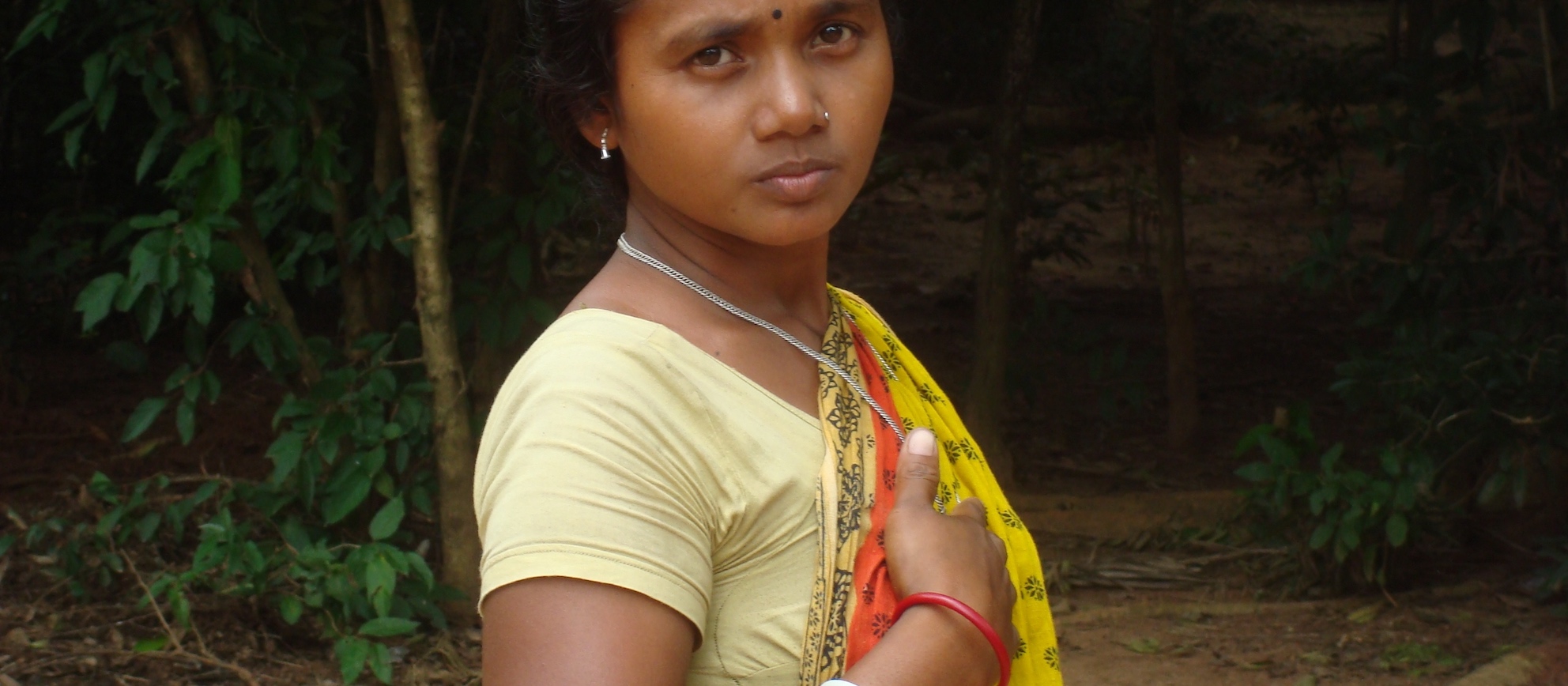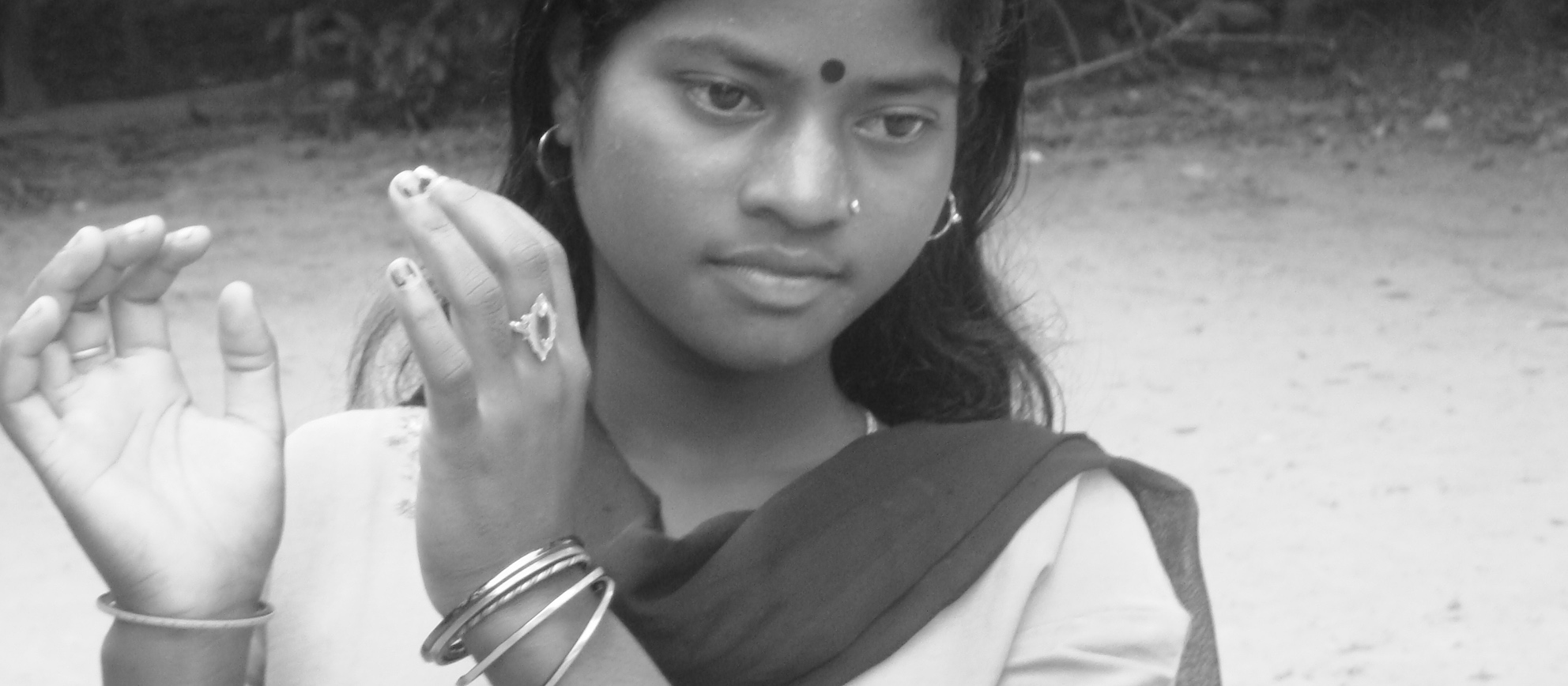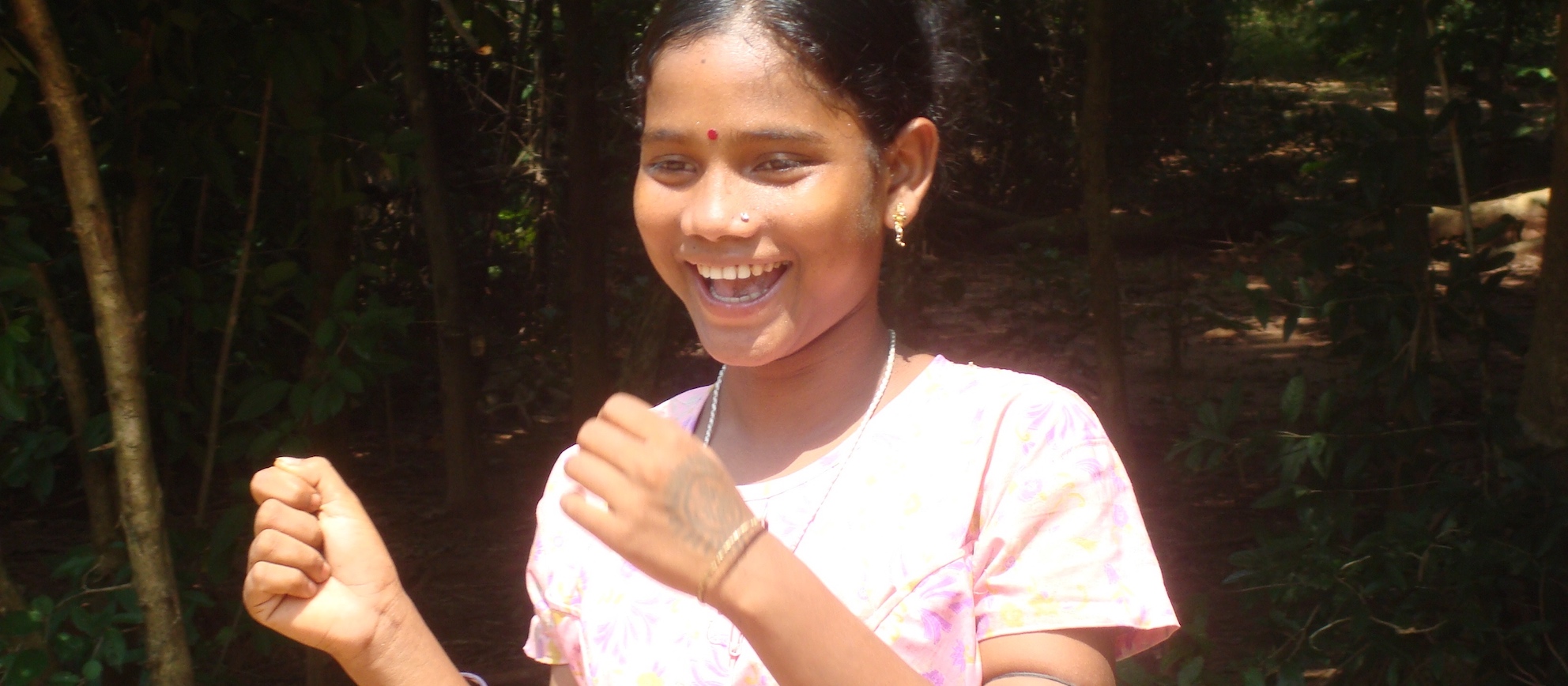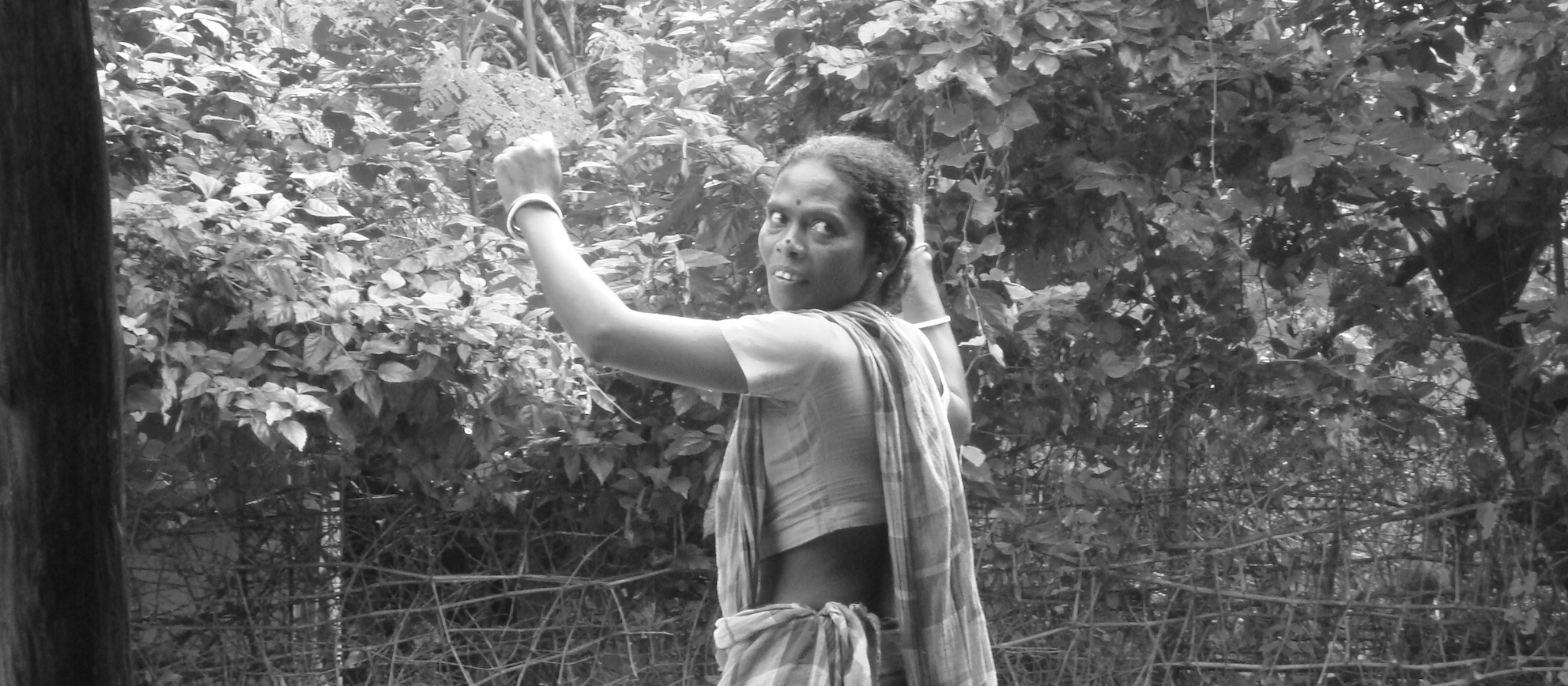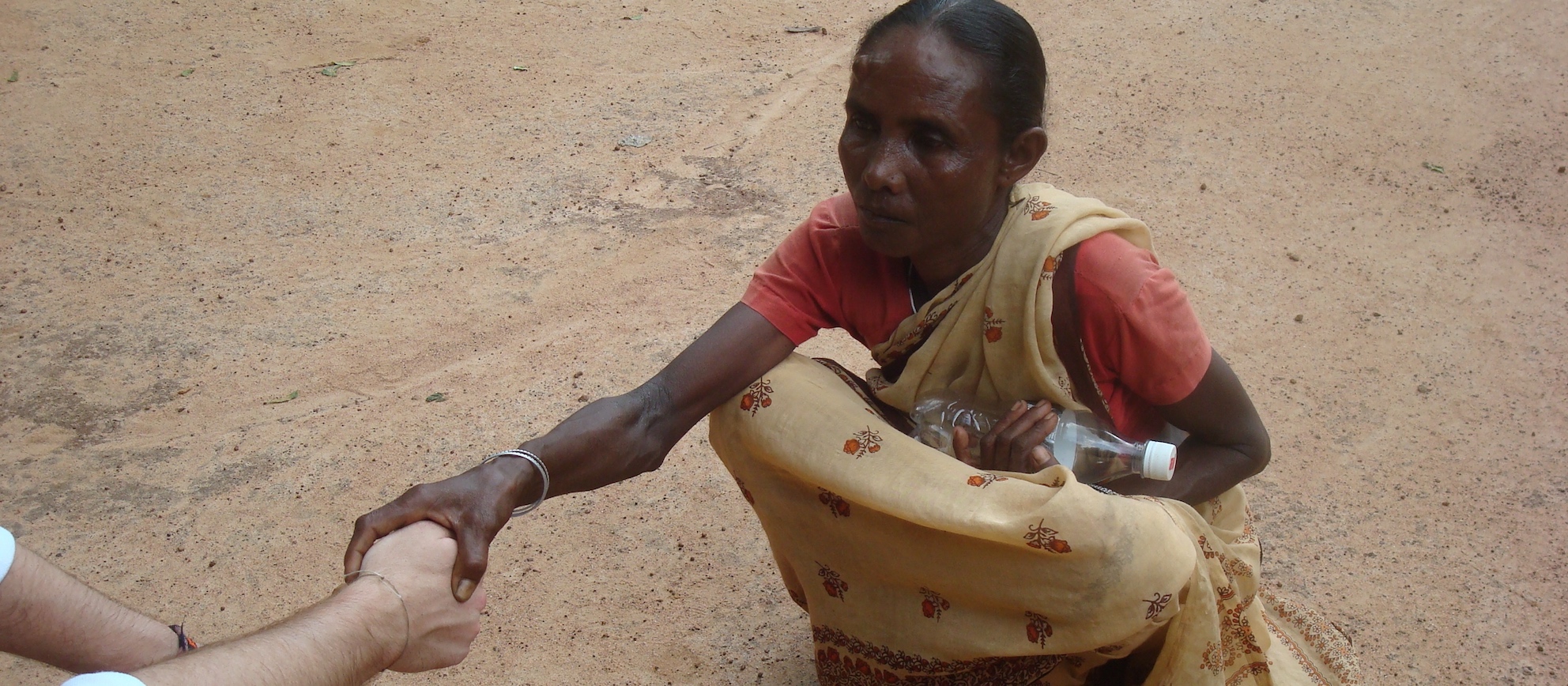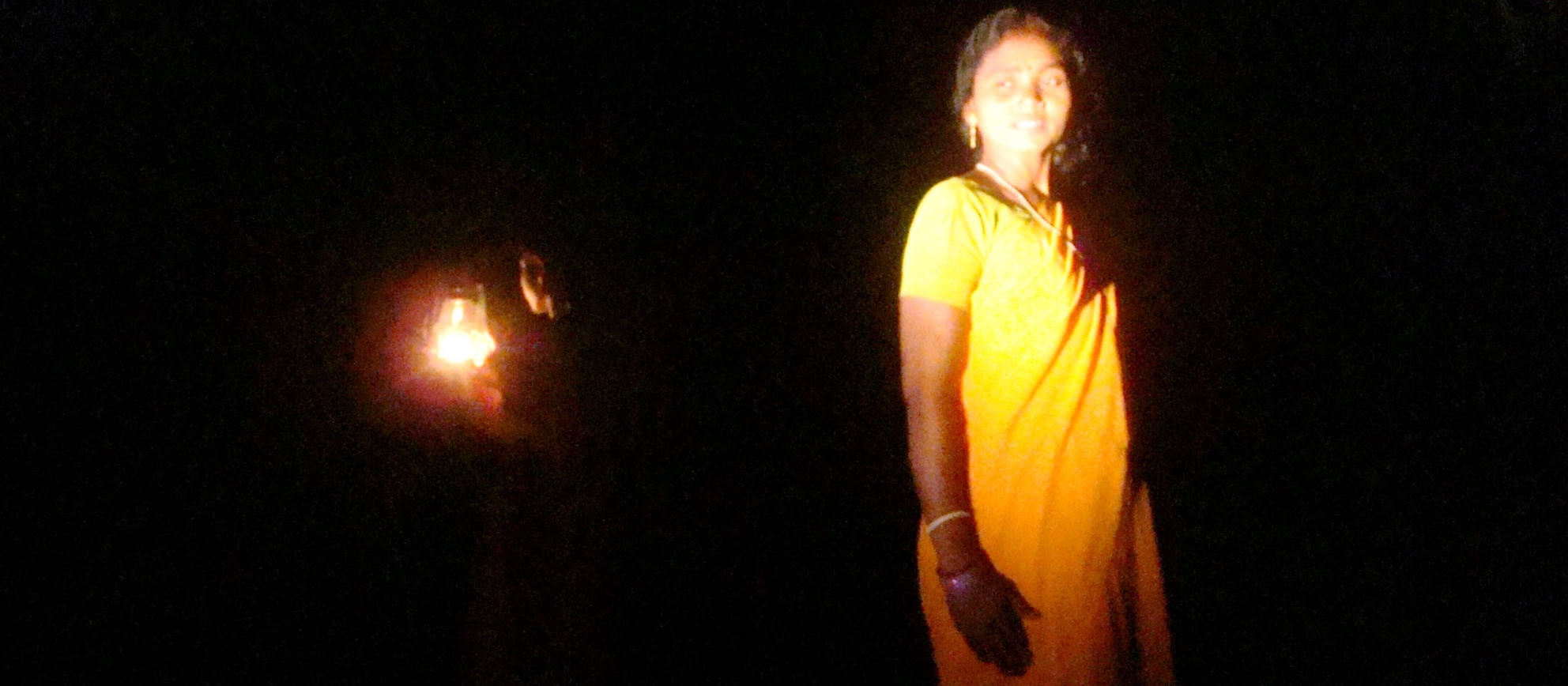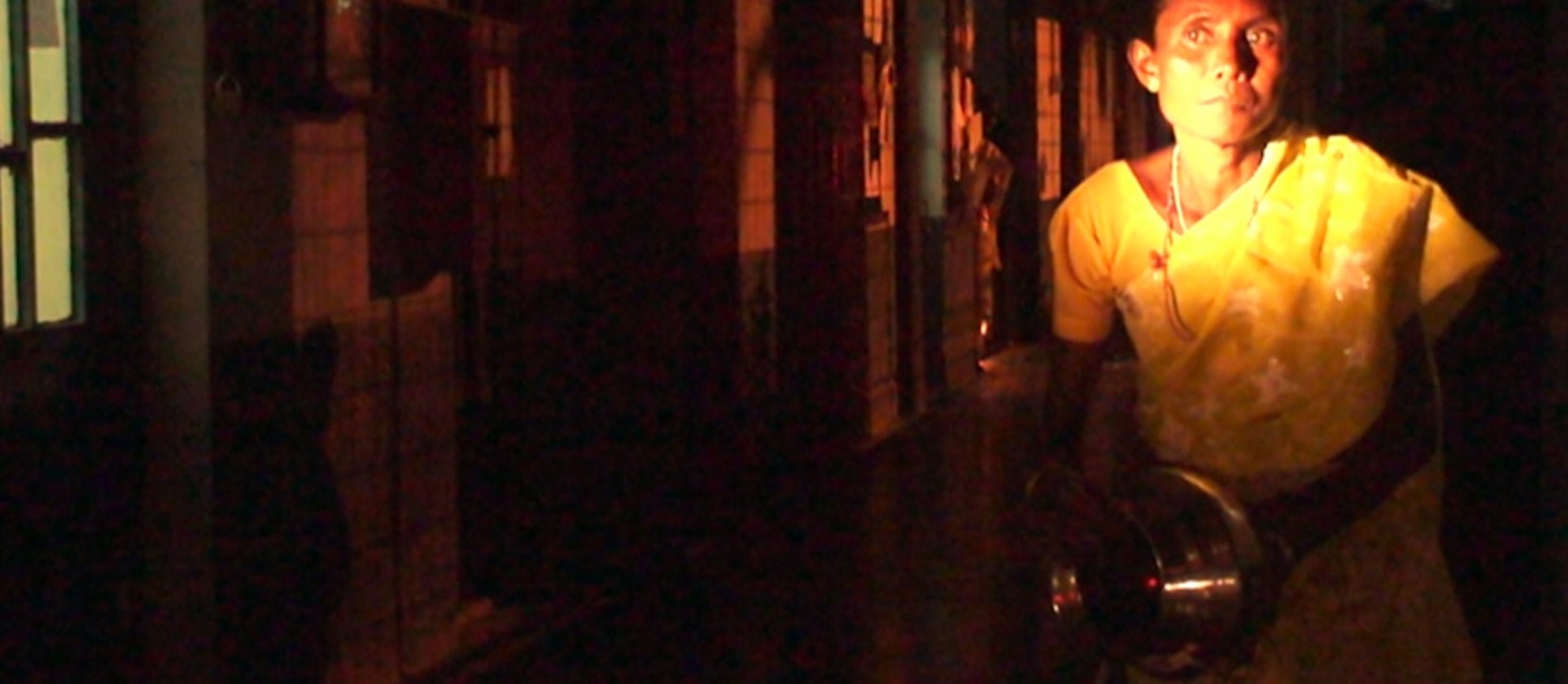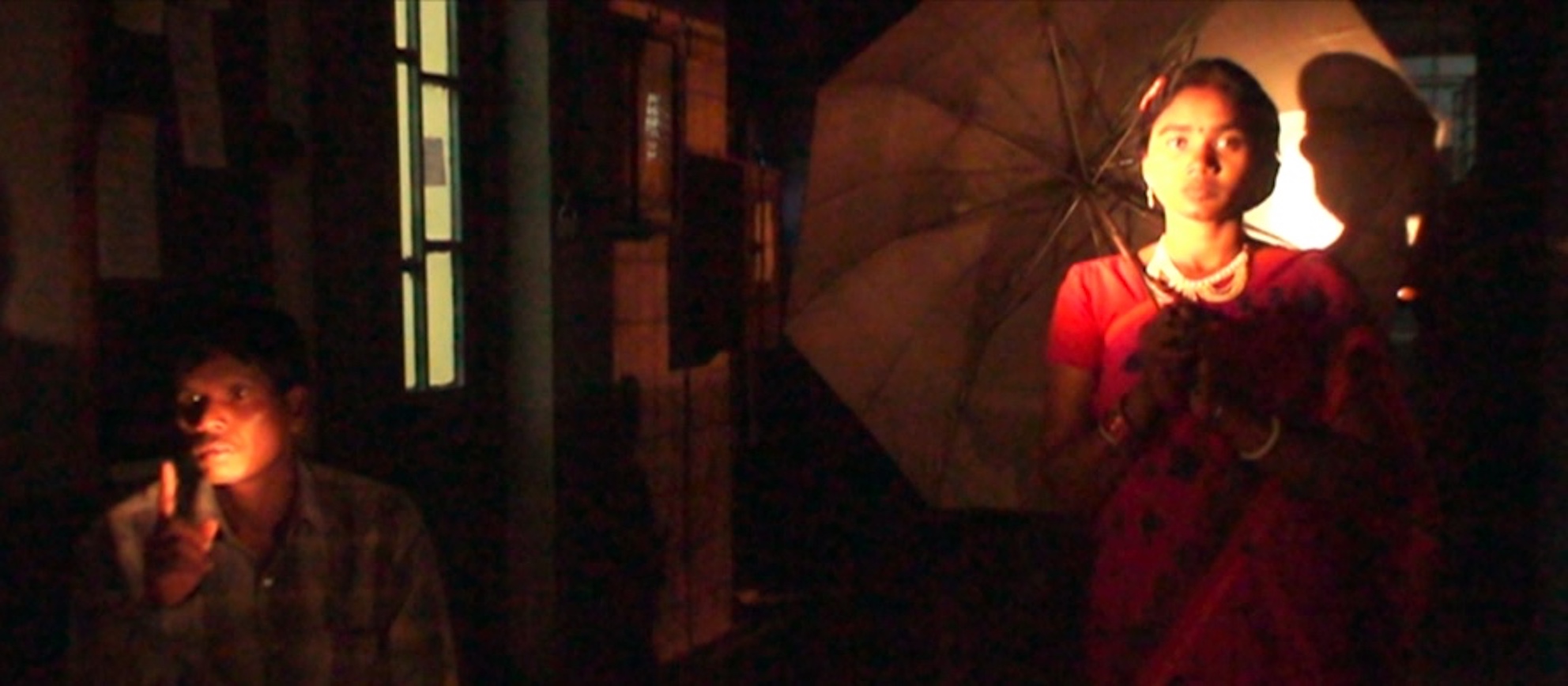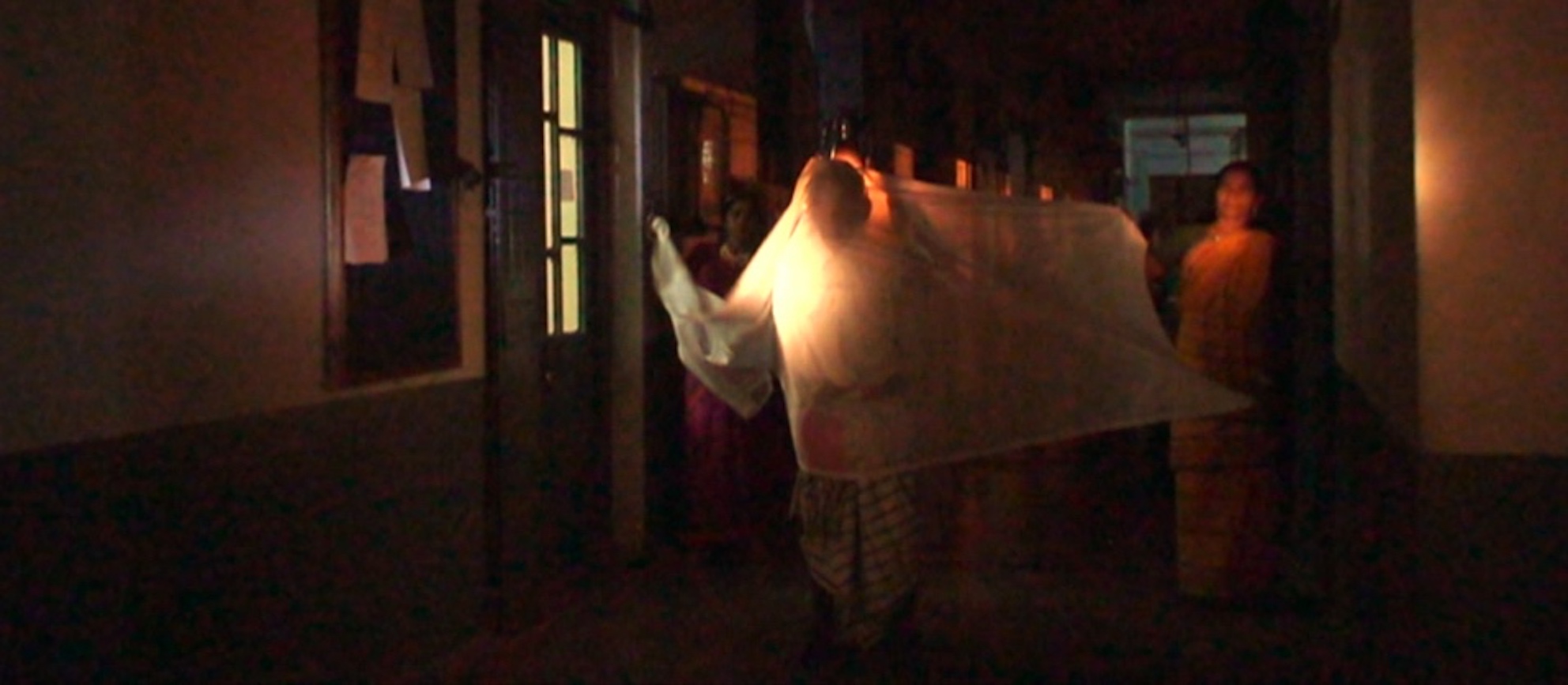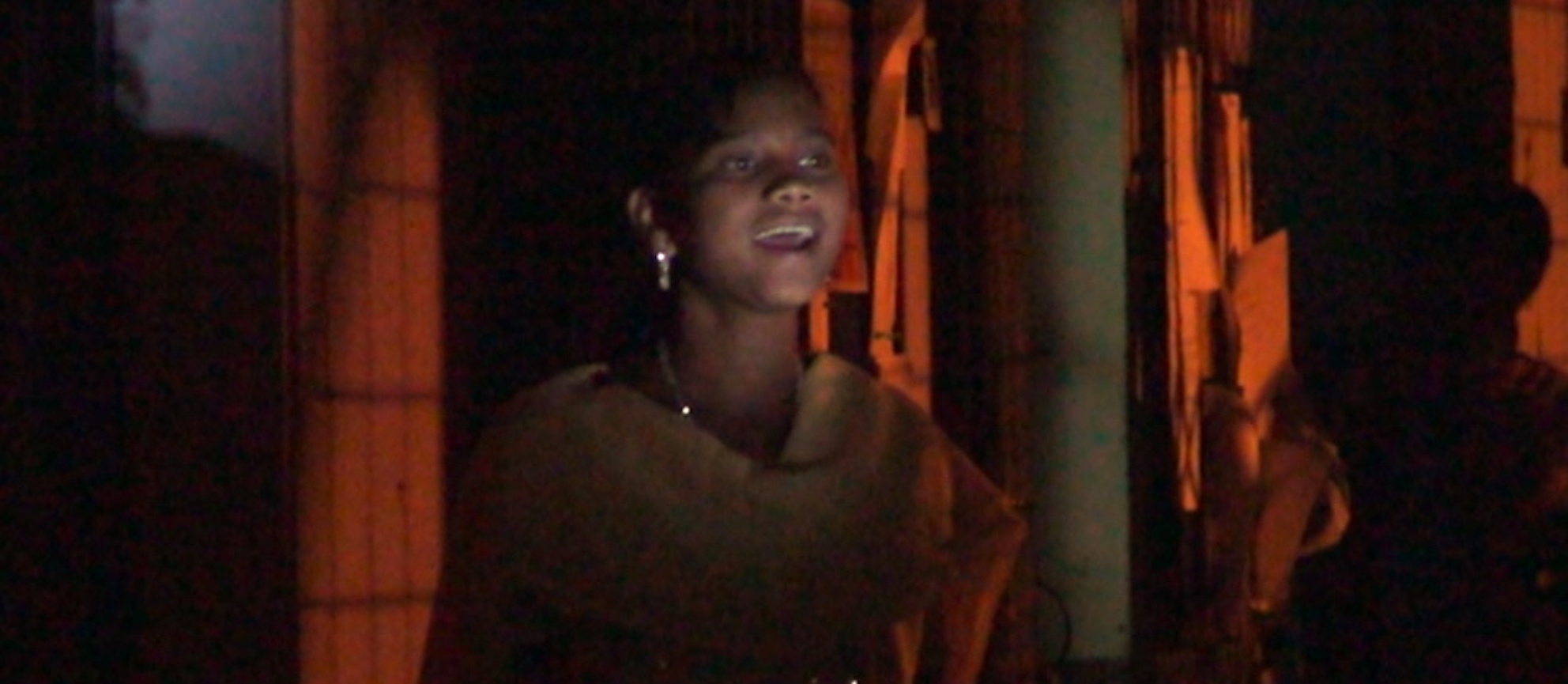home > menu > performing arts > monsoon night dream
It all starts one morning in August 2008, quite early. Sukla Bar and Jean-Frédéric Chevallier have just arrived at Borotalpada. People are waiting for them. Jean-Frédéric and Sukla explains: it would be a matter of preparing together a “theatre” performance. As it is more likely that the word “theatre” does not designate the same for everyone, therefore, it would be a “theatre” that, by doing it together, everyone would understand what the term covers and implies. After an assembly discussions, the villagers announced that the proposal had been accepted. A month later the rehearsals began and four months later the 15 actors, dancers and musicians were showcasing Monsoon Night Dream at the Cultural Center of the Ministry of Culture of India in Calcutta and at the Jadavpur University. 10 years later, Samantak Das, profesor at Jadavpur, recalled in public about “this extraordinary performance which took place in the corridors of the university… those images from ten years ago still come back to haunt me… Amazing! Just amazing!”
There was this extraordinary performance which took place in the corridors of the university in January 2009 and it involved people who are not middle-class, not English-educated or Western-educated: they were very obviously from villages but not defensive about their origins when coming to this important and well-known institution. And they told a story which you could interpret in many ways – I am not even sure it was a story – but those images from ten years ago still come back to haunt me. And I said to myself, “Ok, here’s this man, Jean-Frédéric Chevallier, and somehow he knows how to touch you and he does it without doing any of the obvious things when you think of French avant-garde, European avant-garde.” So much of what they do is about épater les bourgeois, you know, shocking the bourgeois, doing something unexpected, spilling blood on stage, the theatre of cruelty, showing naked bodies…. he does none of that and yet you feel a connection with what he is doing. Amazing! Just amazing!
Samantak Das, “Conversation After The Night “, Fabrique de l’art, n°3/4, 2017-2018, p. 95.
Why not think about theatre as an act of presentation that brings into play movement, energy? Then, attention is drawn to the relationship created between the stage space and the spectator space. What comes out of this in-between space – what is produced by the creation of an in-between space – can be viewed as symbolic, not in the common sense of the expression (“this symbolizes that”) but rather in its etymological sense: “this (the symbol) relates that (the actor) with that (the spectator)”. With this questions in mind, Jean-Frédéric Chevallier proposed to 15 people from Borotalpada, a Santhal village in West Bengal, that they all together produced an experimental stage work. Over three weeks (daily, from 6 pm to 9 pm) they collectively composed and practised a play that they finally called “Monsoon Night Dream”. It is a complete non dramatic proposition. There is no character, no story, no conflict, only a sweet invitation to contemplate, in a very simple way, the presence of the seven women, three men and four musicians who are there, sometimes performing quotidian actions or gestures from their daily lives, sometimes performing parts of Santal dances, sometimes just remaining there, looking at someone in this audience. As an aim of building bridges between different cultures and peoples, the performance, after being presenting in Borotalpada in September 2008, had been brought into the metropolis of Kolkata. Surely, this proposition is quite different from what the city public is used to see. If there is any meaning, it is built by each one in the audience, personally, differently, and from his or her own feelings. So “Monsoon Night Dream” becomes a way to enjoy and share the diversity of our world.
Extract from the leaflet program distributed to the audience in January 2009.
MONSOON NIGHT DREAM theatre of presenting
conception and direction Jean-Frédéric Chevallier with Falguni Hansda, Kajal Hansda, Parmoni Murmu, Sombari Hansda, Fulmoni Hansda, Rani Soren, Mado Hembron, Motilal Hansda, Chamru Soren, Kalicharam Hembron and Chumki Hansda musicians Kanai Hansda, Basanta Soren, Subol Soren and Kisun Hansda assistant director Girish Soren artistic collaborator Sukla Bar Chevallier hosted by Borotalpada Village, Eastern Zonal Cultural Centre, Ministry of Culture, Govt. of India and the Departments of English and Comparative Literature, Jadavpur University, Calcutta produced by Ministry of Culture, Govt. of India and Trimukhi Platform with the support of Seva Kendra Calcutta and Baligeria Mission
![]() première on October 2 and 3, 2008 in Borotalpada village • presentation on January 20, 2009 at Eastern Zonal Cultural Centre and on January 23 and 24, 2009 at Jadavpur University, Calcutta
première on October 2 and 3, 2008 in Borotalpada village • presentation on January 20, 2009 at Eastern Zonal Cultural Centre and on January 23 and 24, 2009 at Jadavpur University, Calcutta
in the press
Read the editorial in The Telegraph →
Read the testimony by Samantak Das →
